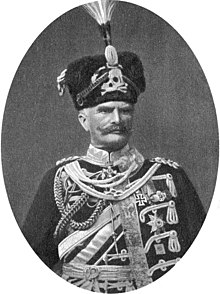
Back توتنكوبف Arabic Totenkopf Czech Totenkopf Spanish Totenkopf (insigne) French Մեռած գլուխ (խորհրդանիշ) Armenian Totenkopf ID Totenkopf Italian トーテンコップ Japanese Totenkopf (symbol) NB Totenkopf Polish
You can help expand this article with text translated from the corresponding article in German. (June 2023) Click [show] for important translation instructions.
|

Totenkopf (German: [ˈtoːtn̩ˌkɔpf], i.e. skull, literally "dead person's head") is the German word for skull. The word is often used to denote a figurative, graphic or sculptural symbol, common in Western culture, consisting of the representation of a human skull – usually frontal, more rarely in profile with or without the mandible. In some cases, other human skeletal parts may be added, often including two crossed long bones (femurs) depicted below or behind the skull (when it may be referred to in English as a "skull and crossbones"). The human skull is an internationally used symbol for death, the defiance of death, danger, or the dead, as well as piracy or toxicity.
In English, the term Totenkopf is commonly associated with 19th- and 20th-century German military use, particularly in Nazi Germany.